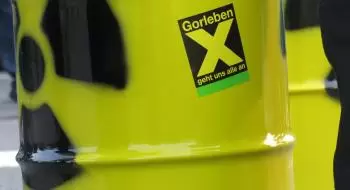
Nuclear waste management is understood as the set of activities that lead to its reuse, its disappearance or its neutralization and evacuation to suitable places.
The treatment of these types of waste must be carried out ensuring long-term safety.
Low and medium-level nuclear wastes are those whose main radioactive particles have a half-life of less than or equal to 30 years.
The management of radioactive materials encompasses all the administrative and technical tasks necessary to:
-
the manipulation
-
the treatment
-
conditioning
-
transportation from the nuclear power plant to the storage center.
-
the storage
These actions must take into account both economic and safety factors. One of the most important nuclear accidents happened at the Tokaimura nuclear waste treatment plant. In this Hisashi Ouchi accident, a worker at the plant received the highest dose of radiation that a human being has ever received.
Most of this type of waste comes from all types of nuclear facilities: from a nuclear power plant, from medical centers with radiotherapy or radiodiagnosis programs, and other facilities where nuclear energy is used. In the decommissioning of nuclear power plants, high-level but also low- and medium-level waste is generated.
In the Spanish nuclear system, this process is regulated by the Nuclear Safety Council (CSN).
How is the isolation of nuclear waste carried out?
The isolation of nuclear waste is carried out by means of the interposition of natural and artificial barriers between the radioactive waste and the human being. Barriers prevent the escape of radionuclides into the environment.
The goal is to suppress all escape routes to the environment, preventing or slowing the migration of radionuclides through groundwater to the surface.
Natural barriers are made up of diverse geological formations. The artificial barriers are composed of immobilization matrices, concrete walls and special clays.
The four barriers used to contain radioactive materials are the following:
Chemical barrier
The chemical barrier immobilizes the waste in a solid, stable and durable matrix that is inert. This operation is known as conditioning. The most used materials for the matrix are: cement, asphalt and polymers. These materials include the chemical elements of the periodic table suitable for not letting radioactive atoms pass.
Physical barrier
The physical barrier is the container where immobilized nuclear waste is confined, thus avoiding its contact with the outside and the possible dispersion of radioactive material. The containers are metal drums, resistant to corrosion and with a high conductivity of heat energy that allows the evacuation of residual heat.
Engineering barrier
From an engineering point of view, this barrier is made up of structures, shielding and storage systems.
Geological barrier
The geological barrier is constituted by the geological formation of the earth's crust where nuclear waste is stored. It must be stable and waterproof, thus stopping the escape of radioactive elements into the environment in the event that they exceed the three previous barriers.
What is radioactive waste conditioning?
The conditioning of nuclear waste is made up of a series of processes. These processes range from the production of waste, until it is stored in drums, after its treatment and immobilization.
A residue of low and medium radioactive activity can be divided into two parts.
A part of this nuclear waste is decontaminated, contains almost the entire total volume of the original waste and has low radioactive activity. The other part is a concentration of radioactive material of small volume and with radioactive activity close to that of the original nuclear waste, which is transformed into:
-
A solid product, in the case of liquid nuclear waste.
-
A compact solid in the case of solid nuclear waste.
What are the phases of conditioning?
Conditioning consists of three phases:
Pretreatment
In pretreatment, nuclear waste is classified (based on its radioactive activity, half-life, and chemical composition), chopped, decontaminated, and stored for radioactive decay and transport.
Main treatment
In the main treatment the volume of nuclear waste is reduced and the nuclear activity is concentrated in said reduced volume. In this way, the storage capacity of the facilities is optimized.
In liquid nuclear waste, the radionuclide is separated from the solution where it is dissolved by chemical precipitation, centrifugation, filtration, evaporation and ion exchange, and is subsequently concentrated.
Solid nuclear waste is usually compacted, obtaining small "pellets" with sufficient strength to prevent its expansion. These tablets will be placed in a larger container and immobilized with cement. Solid organic and biological radioactive waste and combustible liquids will be incinerated, also immobilizing their ashes with cement.
Immobilizer and packaging
In immobilization and packaging, all the components of the waste are immobilized by means of solidification processes (with cement). In this way, the solid product obtained is chemically inert, resistant to fire, stable against radiation, insoluble in water and a conductor of residual heat. The solid product and its container are called a package, and they guarantee the immobility of the radionuclides.